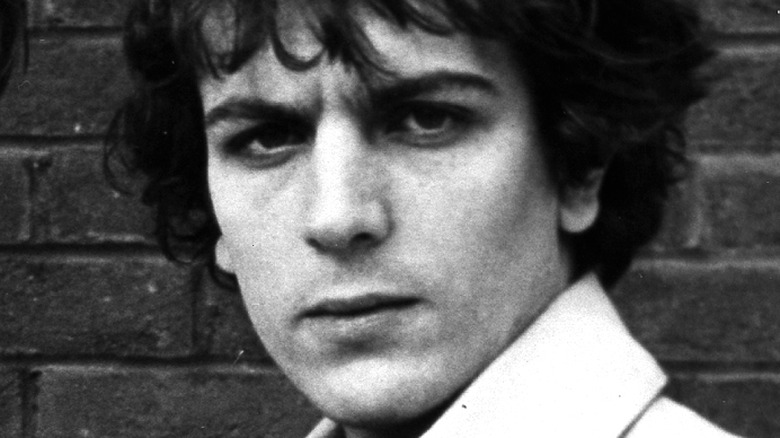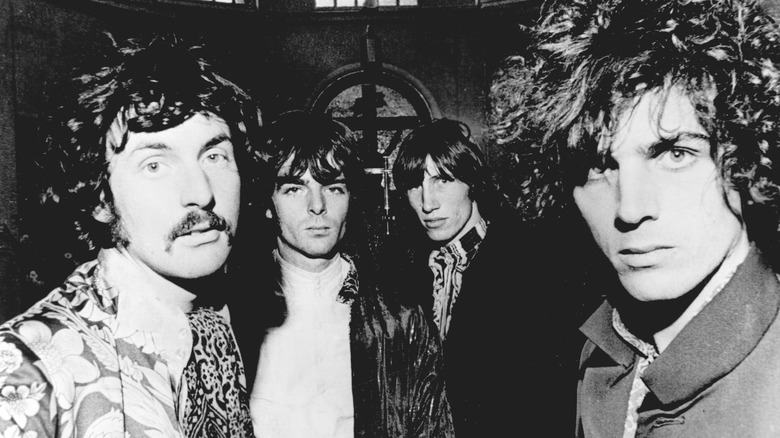Inside Syd Barrett's Disastrous Final Recording Session
In 1967, all signs pointed to Pink Floyd being the immortal psychedelic rock heroes they would one day become. At that point, though, the band was fronted by Syd Barrett, who greatly influenced the band's experimental direction, according to Biography. Also around that same time, David Gilmour — who would one year later be tapped to replace Barrett as a singer and guitarist — also joined the group, as NME notes. Coinciding with the new band member, Barrett's mental health seemed to decline, due in no small part to his drug use. As a result, the musician's behavior became erratic.
Because the other founding members of Pink Floyd felt they could no longer rely on Barrett as the demands of rock stardom only mounted, Barrett was kicked out of the group (via Far Out). As Pink Floyd drummer Nick Mason later recalled, the mix of rock 'n' roll stardom and psychedelic drug use seemed to be too much for Barrett. Despite the fact that Barrett was no longer in one of the biggest bands on the planet at the time, he was not quite yet done with music, though. Barrett would go on to record and release two records in 1970, both of which are now considered cult classics (via AllMusic). They would also be the last successful music he would produce before his disastrous last studio session.
Syd Barrett returned to the recording studio four years later
After Std Barrett's 1970 records were released, he faded from the spotlight, never quite readjusting to life as a working musician outside Pink Floyd. Stepping back from his high-profile former group seemed good for Barrett, though, despite the fact his mental health never fully recovered, as AllMusic goes on to report. Over the years, there's been much speculation about the exact nature of the mental health challenges that Barrett lived with. Barrett died in 2006 from complications relating to diabetes, and many attribute Barrett's mental health challenges to the pressures of being a pop star as well as psychedelic drug use, according to the Schizophrenia website.
Looking back on Barrett's pre-Pink Floyd life, though, shows there were signs of the mental health challenge Barrett would live with before he ever even played his first concert. As the Schizophrenia website goes on to explain, Barrett was likely schizophrenic, or at the very least, the late musician fits the profile for schizoaffective disorder, a condition that blends symptoms of schizophrenia such as delusions with other types of mental health challenges like depression and bipolar disorder, per Mayo Clinic. Barrett's ascending rock stardom and drug use probably worsened or triggered the condition, but the underlying genetic predisposition for schizophrenia or schizoaffective disorder was there from the start.
Syd Barrett's 1974 material was never released
When Syd Barrett returned to the Abbey Road Studios in 1974 at the urging of his manager, he was in no condition to make music. He arrived with half-finished material and a guitar without any strings. He also proceeded to engage in unusual behaviors such as attempting to bite the finger of another person with him at the time. The music that did make it to tape on that day was incomplete, and Barrett would disappear for long periods of time during the process, as Far Out continues. For this reason, material from Barrett's final studio session was never finished and it was never formally released. Today, some of the incomplete music can be sampled on YouTube.
After 1974, Barrett would never again make music publicly. By 1978, he retreated to Cambridge, England, where he would live in seclusion up until the time he died in 2006. What's also interesting is that Barrett's cause of death — complications related to diabetes — offers further evidence of what Barrett's mental health challenges really were. As the Schizophrenia website continues, antipsychotic medication used to treat schizophrenics can bring on diabetes. So, too, can the type of lifestyle without much activity that schizophrenics tend to live.


